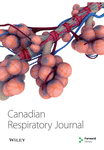Alcohol Fixation of Induced Sputum Samples for Applications in Rural Communities
Abstract
BACKGROUND: Sputum induction is a tool recommended for the assessment of airway inflammation and disease management. Currently, its use is limited because samples need to be processed within 3 h of induction (ie, while cells are viable); therefore, this procedure is unavailable to most clinicians.
OBJECTIVE: To develop a fixation method for induced sputum samples that allows for a delay in processing while maintaining sample integrity and not altering the standard processing method.
METHODS: Sputum samples were collected and split into three portions: a fresh sample processed using the routine method (within 3 h, using dithiothreitol); fixation in alcohol followed by delayed processing using the routine method (within 48 h to 72 h, using dithiothreitol); and fixation in formaldehyde followed by delayed processing using an alternative method (within 48 h to 72 h, using proteolysis). For each method, cytospins were prepared and differential cell counts were performed.
RESULTS: Fixation in alcohol provides accurate measures of eosinophils and macrophages, but not neutrophils. Formaldehyde fixation provides accurate measures of neutrophils and macrophages, but not eosinophils.
DISCUSSION: Alcohol fixation is a superior method for eosinophil quantification. It requires alteration of standardized methods for sputum sample processing and should be recommended for monitoring eosinophilic airway disease in settings where immediate processing of a sputum sample is not possible.




